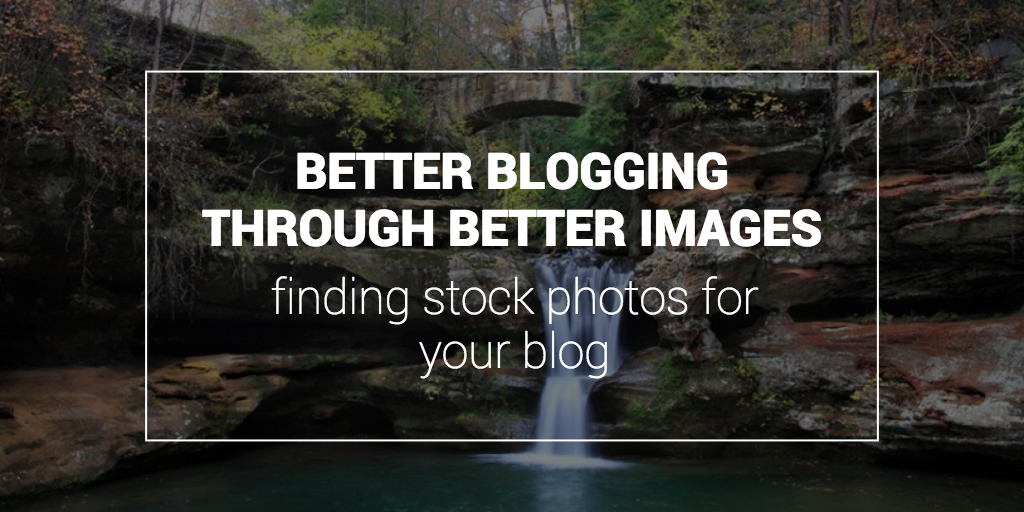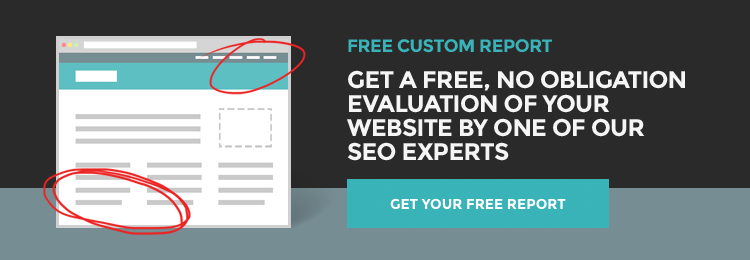
There’re two ways we can go about this.
I can tell you about a serene wilderness retreat tucked into the foothills of Ohio Appalachia. An arched stone bridge is perched above a waterfall cascading through a gorge into an aqua pool of tranquility as specs of colorful fall foliage surround jagged rock ledges.
Or you can simply admire the above image, letting your own mind paint a description that’s as vivid as it is original.
Like a waterfall’s gush, the application of the “picture’s worth a thousand words” mantra is seemingly endless when it comes to your business blog. A visually-stimulating content marketing campaign captivates your target audience, caters to their strongest sensory receptors, incites emotion and prompts buyer action in a manner that’s unparalleled by standalone text.
When you embark upon consuming a piece of text that’s void of images, the task of reading feels overwhelming. The authoring content marketer has done you a disservice, and you’re likely inclined to gloss over the text or skip reading altogether.
Not surprisingly, statistical evidence almost unanimously supports inclusion of a visual element each time:
- Content with images receives 94 percent more views than content without them.
- The brain processes visual information 60,000 times faster than it decodes text.
- The average consumer’s attention span is estimated to be eight seconds – one second less than that of a goldfish.
Ultimately, the bottom line for any content marketer is this: Always have an image accompany your blog post, even if it’s just your company’s logo.
OK, so you know your blog’s text needs a photo like a memory-deficient goldfish needs water. Now what? What can you do to pair your content with the perfect image short of pulling out your camera everywhere you go or committing blatant online copyright infringement?
Our beginner’s guide to stock photos simplifies the process of securing high-quality, low-cost images that not only complement your blog post, but also make your content pop for your visually-centric audience.
Have an Idea of What You’re Seeking
As with most decision-making processes, it behooves you not to go in blind. You may not be able to visualize exactly what your ideal blog image looks like, but it helps to have a basic idea, since most stock photo sites offer keyword searches.
If your B2B blog pertains to mixing business with leisure during travel, perhaps you enter search mode seeking a visual depicting an employee on the beach with a laptop or a business traveler in an airport sporting both a briefcase and a pair of skis. This level of specification converts your needle to a hay-baling shovel within the virtual haystack that is the Internet.
Combine Relevancy with Effectiveness
An appropriate image selection should be applicable to your blog’s content yet compelling enough to catch your reader’s eye. Striking this optimal balance can prove difficult, and it’s not uncommon to sacrifice a minor degree of relevancy in order to utilize a particularly effective image.
Put your creative mind to use when choosing a visual to accompany your content. Rather than always selecting a descriptive image that precisely illustrates your blog topic, seek a conceptual image that hints at your topic while conveying a larger idea – especially when your blog tackles an abstract theme. When your bumblebee-branded start-up secures a funding round, a bee pollination image fits the bill.
Know Your Rights
While the Internet still resembles the Wild Wild West in some respects, regulations exist regarding image use. Not all photos found on the Web are fair game and, at the very least, proper attribution is often required when opting to republish an image. Rather than risk a lawsuit from inadvertent copyright violation, it’s worthwhile to familiarize yourself with basic stock photo terminology:
- Creative Commons Images: The owner of an image has licensed it in a manner that affords people the right to use or share that particular image freely or with minimal restrictions.
- Public Domain Images: Available for public use without restrictions nor the need to seek permission, thus presenting an appealing option for bloggers.
- Rights-Managed Images: Typically refers to a single-use license on a particular image that can be purchased from an image licensing site and allows for limited-time, semi-exclusive usage.
- Royalty-Free Images: Stock photo sites offer non-licensed images for purchase that don’t have time limitations for usage. These photos are cheaper than rights-managed images but lack exclusivity.
When you’re not able to ascertain the status of a particular image, proceed with caution to avoid copyright infringement. Chances are you can locate elsewhere an image of similar quality and relevancy that clearly falls within the aforementioned categories.
Diversify Your Image Types
Visual variety is key to maximizing the enhancement images can bring to your business blog. Even if you start by using standard photos, you should eventually graduate to incorporating visual stats and infographics that convey quantitative information to your readers in a more meaningful and easily understood manner.
A diverse array of images can also increase your blog’s engagement with your readership. Photo quotes – quotations or inspirational messages with a photographic background – and symbolic icons represent two of the most socially shareable types of visuals. Create unique visual elements and be delighted when your readers like, post, share and Retweet your blog.
Free Stock Photo Sites
Who says nothing in life comes free? While paid sites own a sizable portion of the stock photo market share, a number of sites exist offering relatively high-quality photos for unlimited use free-of-charge.
You can maximize the utility of a free photo site by having a hunch of what you’re seeking ahead of time. Search free sites for images using a series of specific keywords (“basset hound puppy”) rather than a single generic word (“dog”). Having some flexibility with your final image selection also goes a long way with preserving your patience as you peruse images on a free site.
Our five favorite free stock photo sites:
Affordable Paid Stock Photo Sites
While “free” is certainly the best price, you often get what you pay for in the world of stock photography. By paying for your stock photos, you generally get higher-quality images (resolution matters!), better selection and enhanced site searchability. After all, paid sites can offer photographers better commission rates, thereby increasing both the quantity and quality of image submissions they receive.
But paying for photos doesn’t necessitate taking out a personal loan. Many desirable stock photos can be had for one dollar or less, with cost-per-image rates reduced when you purchase a stock photo subscription service. The value a splashy photo can offer for increasing blog visibility often justifies paying a nominal rate for use of that image – especially when you intend to push that blog post across various platforms such as Web, email and social media sites.
Our five favorite paid stock photo sites:
Whether free or paid, public domain or rights-managed, let images infiltrate your blog content. Find the right photos for your business blog (waterfalls optional) and visualize better readership in your near future.


